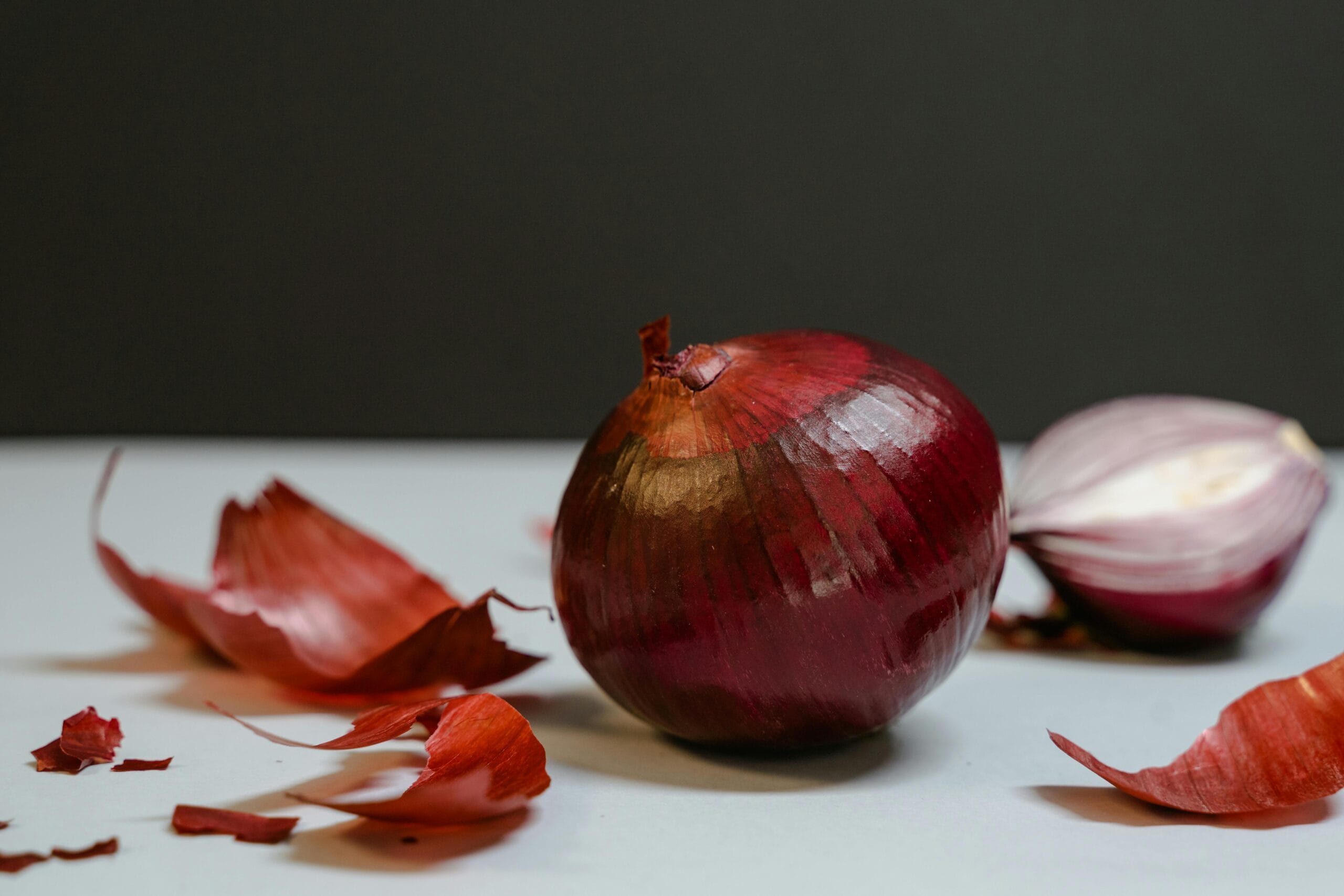How to Make Onion Peel Fertilizer at Home: Making an organic homemade fertilizer with onion peels is easy and odor-free. It is easy to store and works well on all types of plants weather it is outdoor, indoor or vegetable plants. It has no adverse effects when applied correctly.
Answers to common questions about suitability, growth, side effects, application, and the creation process are covered in this article.
What is Onion Peel Fertilizer?
Onion Peel Fertilizer is a natural and organic fertilizer made from onion peels. This homemade fertilizer is created by utilizing the nutrient-rich properties found in onion skins.
The process involves extracting beneficial compounds from the peels to formulate a solution that can enhance plant growth and health.
How to make Onion Peel Fertilizer at Home
1. Container: Use a plastic, glass, or jug. Fill it with dry onion peels, avoiding wet pulp to prevent odor and fungus.
Note 1:
- Do not use wet pulp of onions because it has the potential to rot, emit unpleasant odours, and may attract fungus.
- Additionally, a tonic made with wet pulp cannot be stored effectively.
Note 2:
- Choosing dry peels ensures that the tonic avoids problems like attracting ants or introducing fungus to the soil when applied later on.
2. Soaking: Add water to soak the peels. Cover and place it in a cool area (not in direct sunlight) for 24 hours.
3. Purple Solution: After 24 hours, a purple solution forms, suitable for seedlings. Mix 2-3 spoons with water and apply to seedlings.
4. Stir daily for 4 days: Stir daily for 4 days to create a dark tonic for leafy plants.
- After leaving it for 4 days and stirring every day, you will have a strong, dark tonic ready for leafy plants.
- Strain it if necessary and mix it with three times its volume in water before giving it to the plants.
5. Soaking the pulp in water for 7 days: Soak pulp for 7 days for a dark brown tonic.
- After 7 days, strain it well and do not keep it for more days.
- Mix the strained tonic with three times the amount of clean water and use it to feed fruiting and flowering plants.
Also, read: Top Organic Liquid Fertilizers for Plants
Precautions need to be followed before giving fertilizer
1. Strain Properly: Make sure no onion pulp gets into the soil.
- Always strain the solution well before giving it to the plant.
2. Hoe Soil: Before applying the onion peel tonic, make sure to thoroughly hoe the soil.
3. Do not give fertilizer in wet Soil: Ensure that the soil is dry before applying any liquid fertilizer, as excessively wet soil may hinder absorption.
4. Avoid giving during extreme temperature: Give the tonic in the early morning or evening.
- Avoid giving it during sun exposure or in the afternoon.
- Providing fertilizer to hot soil during sunny periods can scorch the plants.
When to Use Onion Peel Fertilizer
You can use the onion peel tonic in every season—summer, winter, or monsoon, but avoid giving it during the plant’s dormant period.
1. Summer Dormancy: Some plants like Tulsi (holy basil), curry leaves, hibiscus, mint, and Mexican mint, etc. thrive in summer but experience dormancy in winter.
-
Don’t use onion tonic on these plants during winter.
2. Winter Dormancy: During peak summer, plants like roses and chrysanthemums, usually associated with winter, may go in dormancy period.
- Avoid using onion peel fertilizer on them in summer.
3. Year-round Use: Besides specific dormancy periods, you can give onion peel to plants year-round, whether indoors or outdoors plants.
How to use Onion Peel Liquid Fertilizer
1. Outdoor Plants: Give once in a month.
- For flowering or fruiting plants in their peak stages (e.g., roses in winter or hibiscus in summer), use it twice a month.
2. Indoor Plants: Feed once every 2 months with onion peel fertilizer.
3. Spraying Option: Dilute the tonic with four times water and spray on plants every 15 days.
- While the visible difference might not be huge, there are no side effects.
Note:
- While onion peel provides nutrients, it is good to use other fertilizers for a balanced nutrient profile. Avoid using other fertilizers, Epsom salt, tonic, seaweed, banana peel, or similar substances 10 days before or after giving onion peel fertilizer.
How to store the Onion peel tonic
1. Use an Airtight Container: Put any leftover tonic in a sealed container and keep it in a cool place, away from bright sunlight. But don’t store it in the fridge.
2. Shelf Life: Since it is homemade without preservatives, how long it lasts depends on the temperature and weather.
- In hot conditions, it might last 3-4 days; in colder weather, it can last 10-15 days. On average, expect about 7-8 days.
3. Check Regularly: Every 2-3 days, open the container and give it a shake.
- Before using it, give it a sniff. If it smells bad, don’t use it. If it is odorless, it’s safe for your plants.
Well! Adding Onion Peel liquid fertilizer in your gardening routine can yield noticeable improvements. Explore the positive effects and admire the positive changes in your plants.
Follow our Social media channel:
1. Voice of Plant – YouTube Channel
2. Voice of Plant Facebook Page
3. Instagram Voice of Plant Channel
Happy Gardening!
